Investigating algae in the Arctic with enabling technology
The Arctic white winter wonderland. Ocean is covered by sea ice where seals and polar bears live. The landscape is mesmerizing. Although it is always cold here, this part of the planet is subjected to strong seasonal changes. The most dramatic being light.
So far North, we have the Polar Night with 3 months of darkness from November to February and 3 month of light “midnight sun” from May to July. This variation in day length, light intensity and spectral composition of light defines what we call the light climate and is one of the major cues of life.
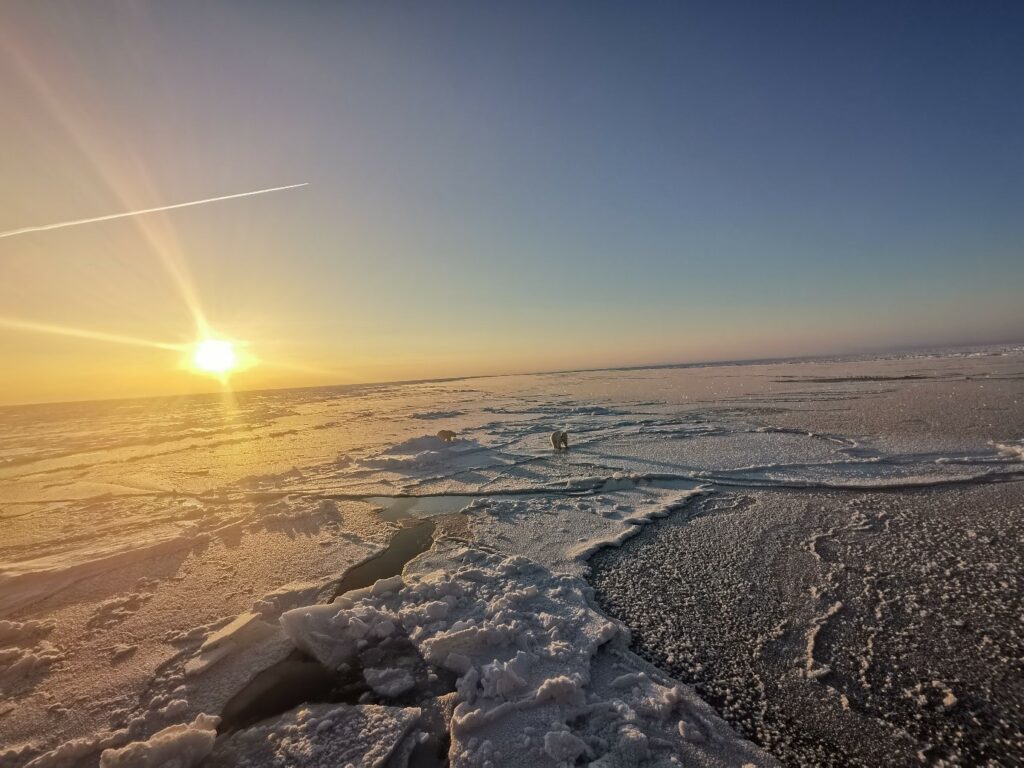
Life under the ice
In this extreme environment, I am studying small micro algae that grows on the underside of the ice. Microalgae is found all over the world. They can be drifting in the ocean as part of the phytoplankton creating blooms when the conditions are right. These little organisms use energy from sunlight to turn water (H20) and carbon dioxide (CO2) to make glucose (a form of sugar they can use to grow). As a byproduct they release oxygen. These oceanic microalgae are responsible for releasing more oxygen into the atmosphere than the rainforests. In addition, algae are the basis of the food web providing food for many organisms.
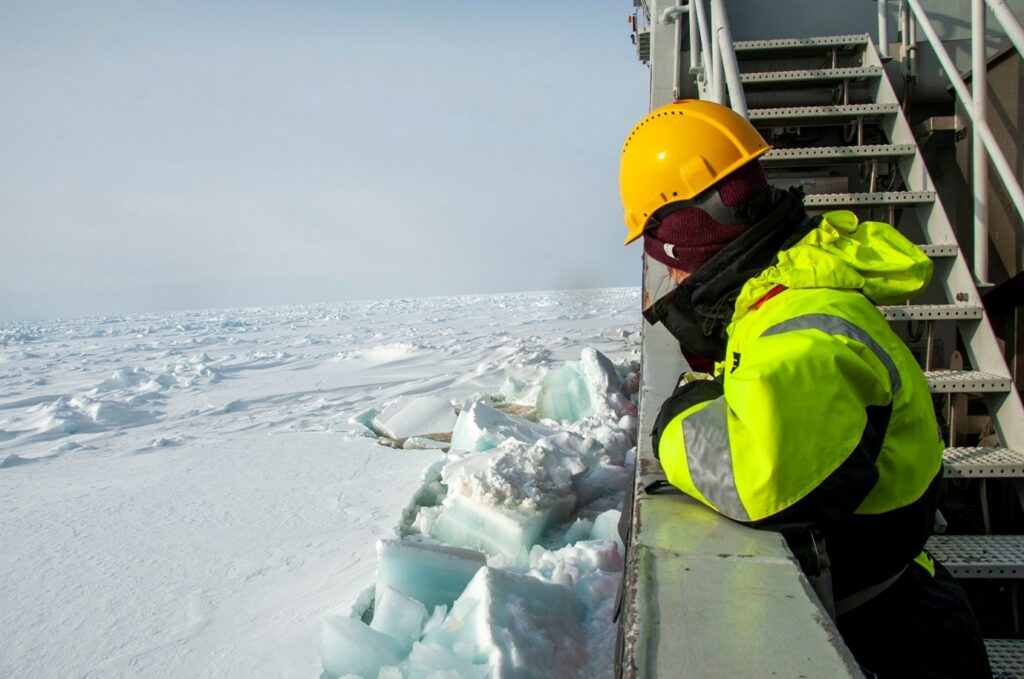
What is interesting about algae growing under the ice is that they somehow survive through the dark Polar Night during which time the water column gets mix. This mixing brings up nutrients from the deeper parts of the Arctic Ocean. So that when the sun starts appearing and can penetrate through the ice sheet, the algae suddenly blooms. The underside of the ice is then covered by a layer of microalgae. As the ice drifts south into warmer waters and melts, and the algae use up the nutrients they die, start sinking down the water column where they are food for many organisms.
Enabling technology for mapping algae
Despite their importance, ice algae are very challenging to study. Traditionally, research have used ice cores to get samples from the bottom of the ice. Alternative method requires scuba divers and a lot of safety logistics. Fortunately, we live in the age of technology. With the help of collaborators in the department of Marine Technology, I have been able to use a small remotely controlled vehicle (a type of robot) that can carry different instruments including an underwater hyperspectral camera. Using this system, I am trying to map macroalgae habitats as well as microalgae growing on the underside of the ice and gather some biological information about the health state of the algae growing under the ice.
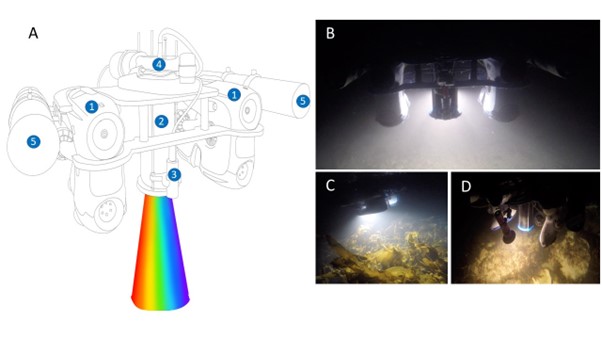
A normal camera functions similar to our eye with red, blue and green receptors that then make up all the colors we see. With the hyperspectral camera we can get information that covers the whole light spectrum. This added layer of detail allows us to identify objects of interest based on their optical fingerprints. This novel mini-ROV-UHI system was first deployed in 2020 during the Polar Night to map the Kelp Forest in Kongsfjorden (Ny-Ålesund, Svalbard). We were able to differentiate between the three major alga groups: green, red, and brown macroalgae.
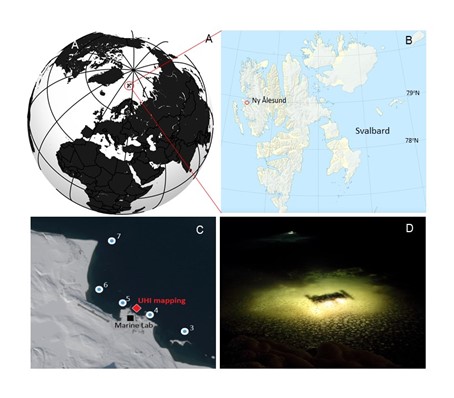
In May 2021 we went to the Barents Sea on R/V Kronprins Haakon as part of the Nansen Legacy spring cruise. Over the course of this three-week cruise, we deployed the mini-ROV-UHI system at three different locations to map the underside of the ice. With this data, we will get a better understanding of the light climate under the ice which includes light intensity (how much light gets through the ice) and wavelengths (which colours are available for the ice algae to use). In addition, we will get information about how much algae there is (biomass) and what are the major groups/species that are found.
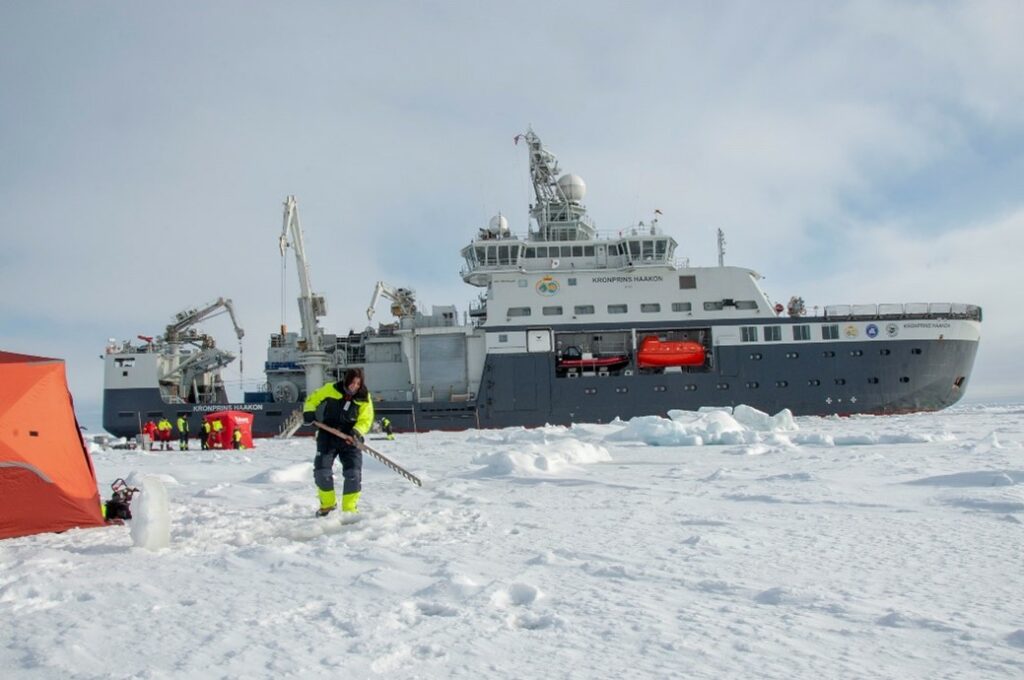
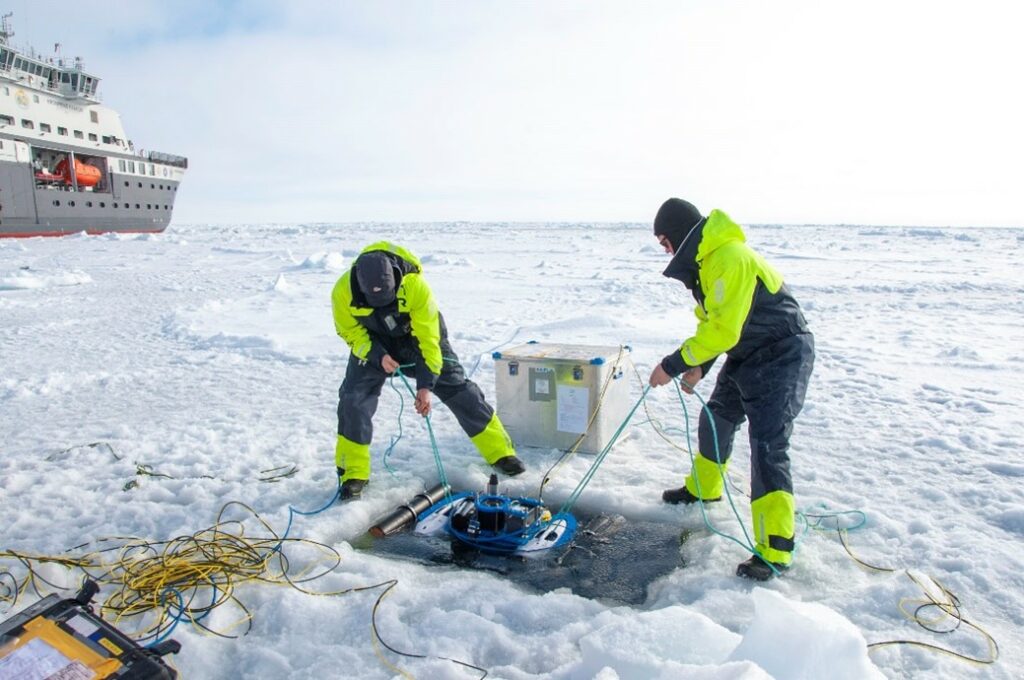
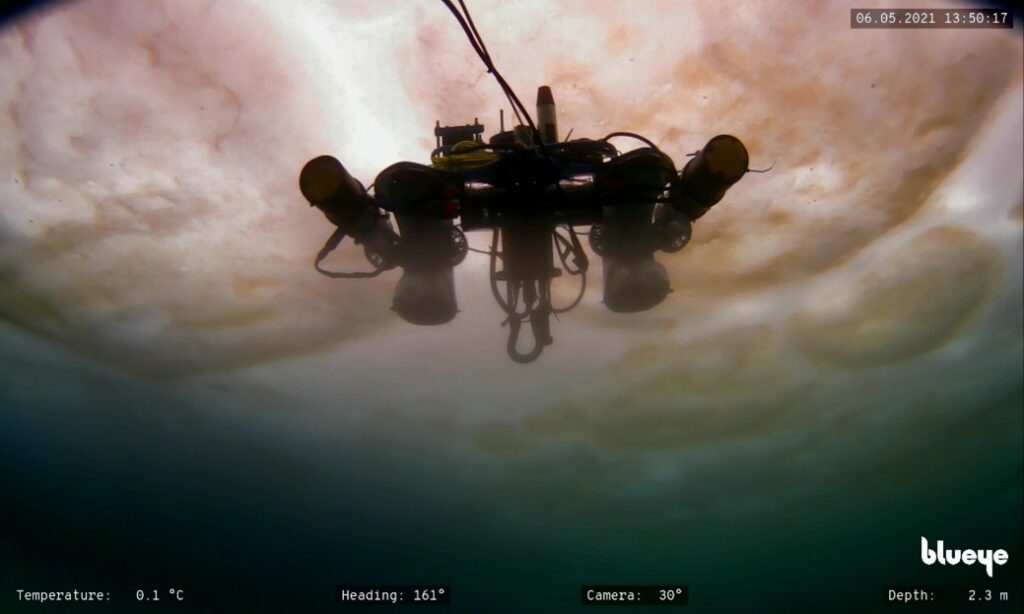
Future perspectives
This work is very important. As the climate is warming, the Arctic is changing very fast. These organisms rely on sea ice as part of their life cycle. With the ice cover diminishing every year and a possible future of ice-free Arctic summer, we are in against time to learn and understand this ecosystem. Technology is advancing fast and allowing us to gather data in unprecedented speed and quantity. However, we need more biologists to make sense of this data. Interdisciplinary research such as this are crucial to advance our common knowledge about this planet. We need more large-scale interdisciplinary projects like the Nansen Legacy.
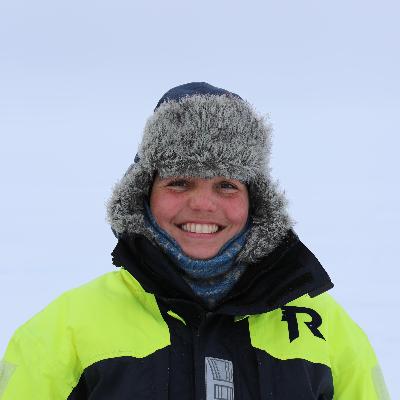
Natalie Summers
Natalie Summers is a PhD candidate at the department of Biology, NTNU, part of the Nansen Legacy and NTNU AMOS, Autonomous Marine Operations and Systems – Centre of Excellence.
Related Posts
2 Comments
Comments are closed.
Search
Søk
Categories
- Arctic Research
- Arkitektur
- Bærekraft
- Bioingeniørfag
- Biologi
- Biology
- Biomedical Laboratory Science
- Biotechnology
- Bioteknologi
- Chemical Engineering
- Chemistry
- Climate
- Computer Science
- Datateknologi
- Digital
- Elektronikk
- Energi
- Energi
- Energy
- Engineering
- Engineering
- Environment
- Food Science
- Forskning
- Fysikk
- Fysikk
- Havbruk
- Informasjonsteknologi
- Informasjonsteknologi
- Ingeniørvitenskap
- Kjemi
- Kjemisk prosessteknologi
- Kjemisk prosessteknologi
- Kreftbehandling
- Kybernetikk
- Marine Technology
- Materialer
- Materials Science
- Materialteknologi
- Matvitenskap
- Meninger
- Miljø
- Min ph.d.
- My PhD
- My PhD
- My postdoc
- Nanotechnology
- Nanoteknologi
- Ocean
- Oil and gas
- Physics
- Research
- Simulering og visualisering
- Spør en forsker
- Studentliv
- Sustainability
- Ukategorisert
- Universitetsliv
- University Life
Kategorier
- Arctic Research
- Arkitektur
- Bærekraft
- Bioingeniørfag
- Biologi
- Biology
- Biomedical Laboratory Science
- Biotechnology
- Bioteknologi
- Chemical Engineering
- Chemistry
- Climate
- Computer Science
- Datateknologi
- Digital
- Elektronikk
- Energi
- Energi
- Energy
- Engineering
- Engineering
- Environment
- Food Science
- Forskning
- Fysikk
- Fysikk
- Havbruk
- Informasjonsteknologi
- Informasjonsteknologi
- Ingeniørvitenskap
- Kjemi
- Kjemisk prosessteknologi
- Kjemisk prosessteknologi
- Kreftbehandling
- Kybernetikk
- Marine Technology
- Materialer
- Materials Science
- Materialteknologi
- Matvitenskap
- Meninger
- Miljø
- Min ph.d.
- My PhD
- My PhD
- My postdoc
- Nanotechnology
- Nanoteknologi
- Ocean
- Oil and gas
- Physics
- Research
- Simulering og visualisering
- Spør en forsker
- Studentliv
- Sustainability
- Ukategorisert
- Universitetsliv
- University Life

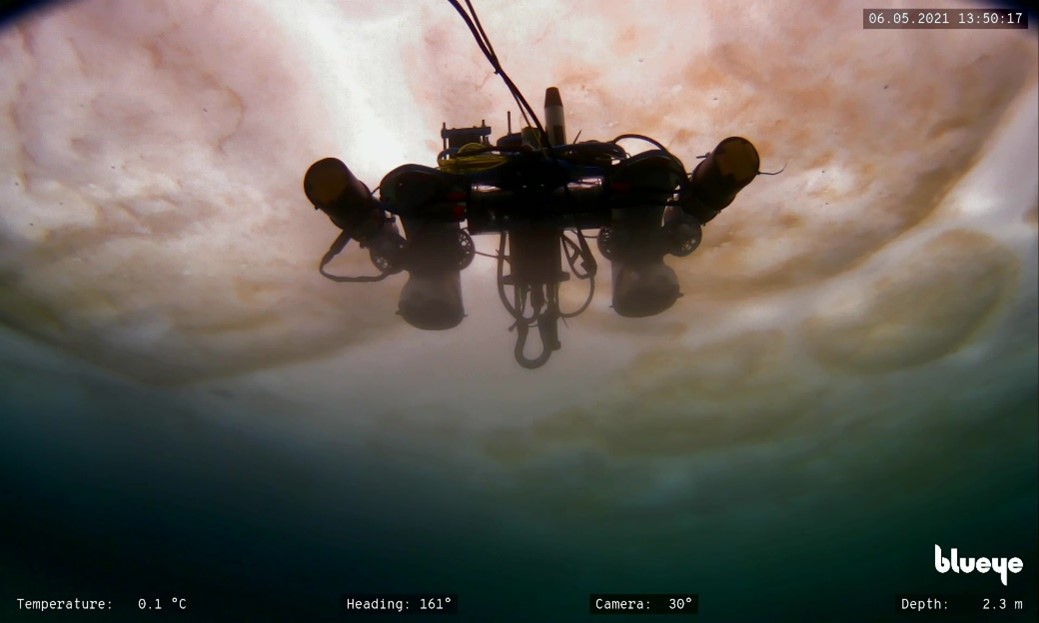
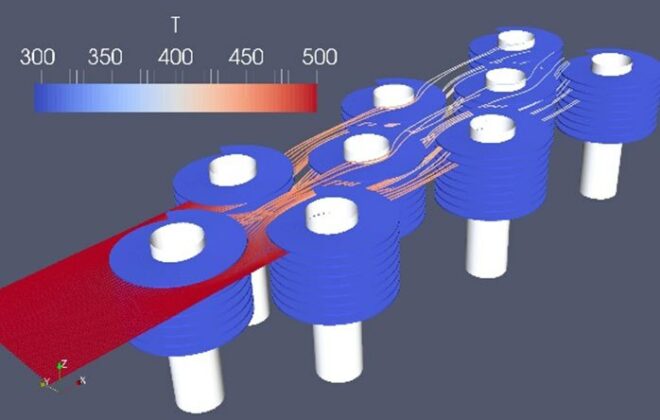
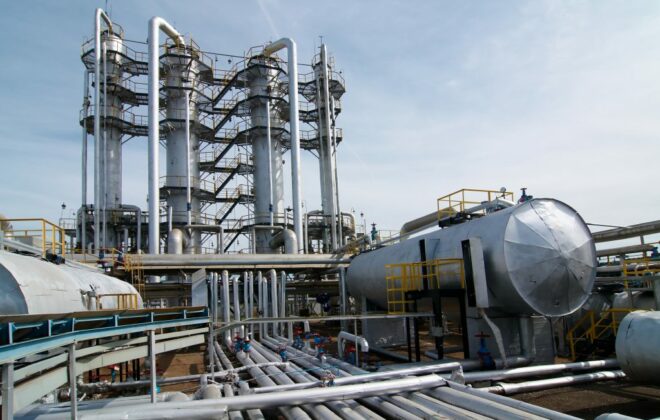
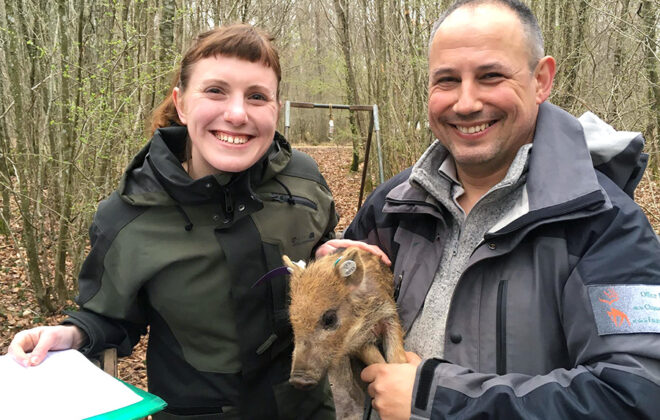
Version in nynorsk
Spørsmål av nysgjerrighet; hvem er det som har oversatt til nynorsk og publisert denne?